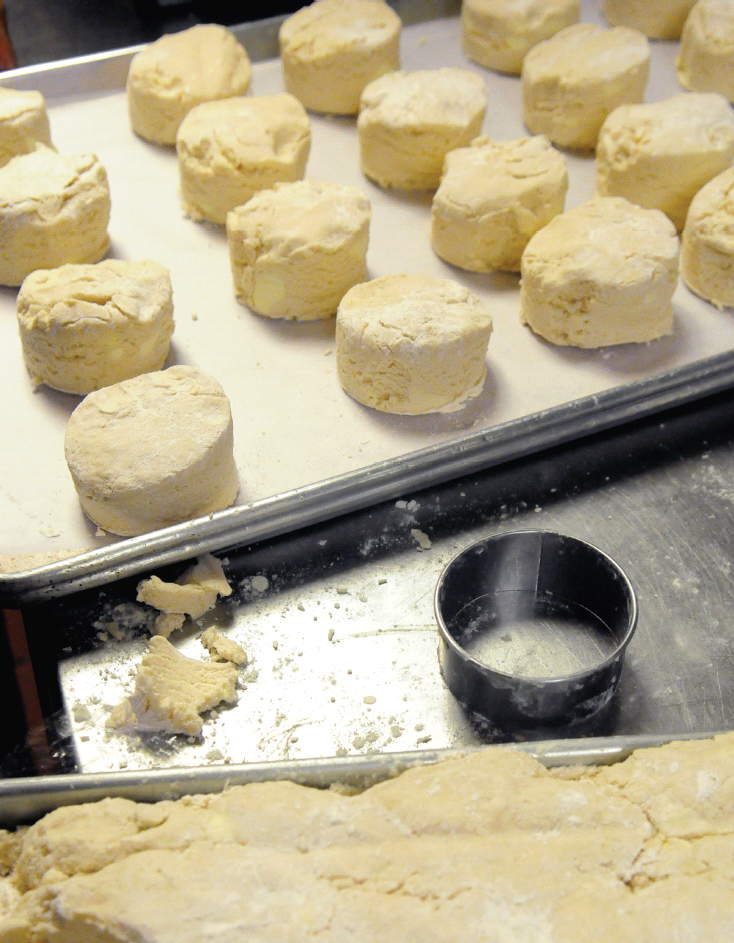
It all started with the buttermilk biscuit. Anyone worth his or her Brooklyn roots knows that the best biscuits in New York, if not the country, were found at the legendary Lundy’s Restaurant in Sheepshead Bay—a.k.a. the family seafood destination of the Northern Hemisphere.
With 2,800 seats back in the 1950s and ’60s, Lundy’s was to Brooklyn what baseball is to America. Lundy’s seemed as big as two ball fields to Neil, who, as a kid, made a monthly pilgrimage there on a bus from Flatbush with his entire family because they did not own a car.
Lundy’s was most famous for its shore (seafood) dinners, its long, snaking lines (especially on Sunday nights), and, best of all, its flaky buttermilk biscuits. Jamaican waiters dressed in crisp white coats made their way around the tiled-floor dining room each night with hot biscuits piled on plates and wax-paper-wrapped pats of butter sliding around. The minute they hit the table, those biscuits were devoured, with requests for more broadcast across the crowded room (some of the loudest from the Kleinbergs themselves).
When it reopened in 1995, after sixteen years of dormancy, Neil was asked to launch the new Lundy’s kitchen as executive chef. It was a dream job, and he could not wait to re-create the restaurant’s magic.
His first roadblock came with the recipes, which—he quickly learned—were passed down by its black southern cooks through oral tradition. Not one cup, one ounce, one teaspoon, was recorded on paper. Neil would have to replicate every morsel from memory, beginning with those beloved biscuits. To start, he reconjured their feeling and flavor: small and soft, not too browned on top, fluffy on the inside, slightly crunchy on the outside. The biscuits needed to taste buttery, salty, a touch sugary, and have a starchy quality that held up when a pat of butter slid between two warm halves.
Neil began his research by reading celebrated cookbook writers, everyone from Fannie Farmer to Maida Heatter to Edna Lewis. He tinkered with different flavors, ratios of shortening and butter, regular milk versus buttermilk. Next he tracked down an artisanal flour through the White Lily company in Tennessee, which sold a seminal soft winter wheat.
After weeks of testing, baking, and tasting, he finally found The One, a recipe born of that wonderful flour and a technique of mixing that made those biscuits remarkably flaky and melt-in-your-mouth good. For a child of Brooklyn—a son of Lundy’s—it was like reinventing the wheel.
And just like that, one perfect biscuit became eight thousand a day. There were two reach-in refrigerators equipped with pan-slides dedicated solely to the sheet pans with biscuits. Every morning, twenty-five trays on each side of both fridges were filled with punched-out mini biscuits ready to bake.
Naturally, when we opened Clinton St.’s oven doors, Neil’s first thought was to serve the biscuits he perfected back at Lundy’s. He didn’t want to serve bagels or croissants. The biscuit would be the ideal morning staple: the platform on which Neil could rest scrambled eggs, cheddar cheese, his own tomato jam—and, as it turned out, his Brooklyn pride.